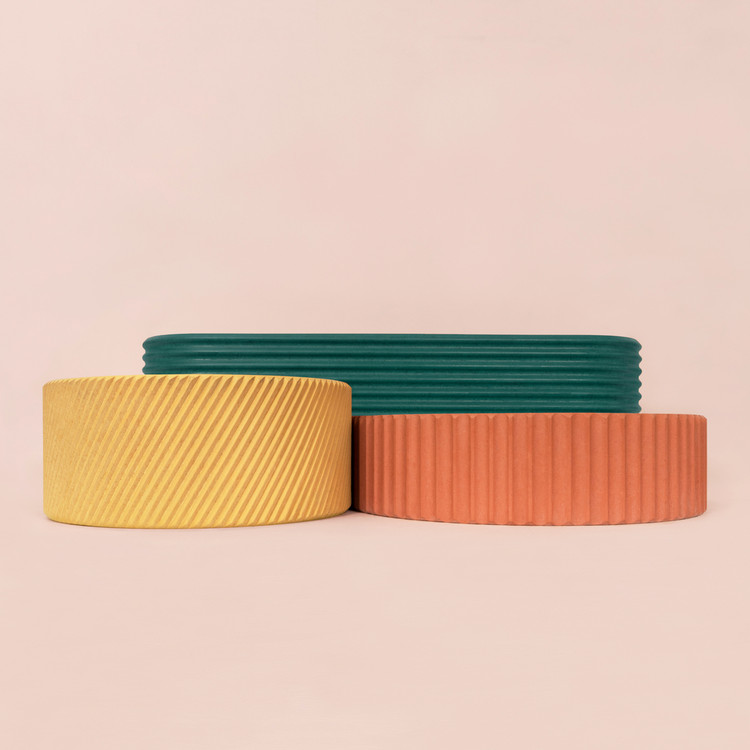Being up to date with new technologies, understanding the best solutions for each project, and knowing the products present in the market and those that will be used in the future. We have observed that these themes arouse great interest in the architects, students, and architecture lovers who visit our site every day. In 2019, ArchDaily began to focus more on materials, covering products, construction techniques, and raw materials in general. The year is coming to an end, so we have compiled the most viewed articles on these topics, trying to understand what they imply for the present and where they will take us in the coming years.
New Uses of Traditional Materials: Technology combined with ancient knowledge
Innovation doesn’t always mean creating new technological materials in the laboratory through controlled and complex processes. Rather, innovation can come from using something common in a smarter way, or creating simple solutions that solve complicated problems. In the case of architecture, this type of innovation may take form in the resignification of materials for sustainable and aesthetic use, such as the beautiful mud walls in Ghana, or the use of waste to create artistic objects and various coatings. It can also mean rethinking inventive construction details to use a material like bricks.
In the case of traditional building materials, we showed this year various possibilities for improvements in building efficiency, sustainability, and even aesthetics. With wood, for example, the many different panel options have allowed more universal usage of this eco-friendly material in uses ranging from furniture to floors. Engineered woods, such as Cross Laminated Timber and Glued Laminated Wood, among others, have revolutionized the industry, paving the way for the construction of wooden skyscrapers in the near future.
Concrete, another traditional construction material that has been used in primitive forms since Roman times, remains highly appreciated by architects, whether natural or with the addition of pigments. Still, many researchers around the world continue to look for ways to make it lighter and sturdier for use on structures and even interior components. Innovations such as autoclaved cellular concrete or fiber reinforced concrete garnered prominence among our articles, highlighting new possibilities for the material. At the same time, simple solutions to common problems such as protecting slabs from water and vegetation have shown that knowledge is created when we combine traditional knowledge, experimentation, and errors with high-tech research.

Interior Design: Details that improve peoples’ daily experiences
We said it at the beginning of the year: as cities become denser and we spend more time inside, interior design becomes a key factor in determining people’s quality of life. From emotional and bodily health to comfort and efficiency when inhabiting spaces, through personal tastes and levels of intimacy we feel for our environment, ambient quality directly affects the human being, and its design must be carried out with attention and responsibility.

Well-managed sunlight can give us heat and at the same time reduce the flowering of microbes; adequate ventilation can clean the indoor air and cool us during the summer; and the color or incorporation of plants and natural materials can stimulate our senses and make us feel good. On the other hand, cold artificial lighting can help us focus while warm light can create a more relaxing and cozy atmosphere. Even innovating in the designs of spaces that we believed unchangeable, such as the bathroom or kitchen, can totally change our perception of space and our daily experiences. The concern for universal accessibility is also essential.

In a world where standardized design and misunderstood minimalism could literally end up getting us sick, nothing should be left to chance. Interior architecture can be as complex as it is exciting, and forces us to observe and understand people more carefully than ever.
Innovation in Construction Technology: Collaboration, Automation and Empowerment
Knowing the construction process of a material, from its manufacture to its installation, can change our perception of the built environment. In the era of automation and robotics, new machinery and work techniques have redefined all industrial production processes and ordinary construction methods, extending the capabilities of the form and design.
During 2019, and in the last decade, we have witnessed the incorporation into our daily work of new tools for imagining structures and improving the efficiency and effectiveness of the construction process, ranging from visualization technologies and the coordination of devices to prefabrication advances and robotization at the construction site. Of course, the internet and automation are at the center of these technical innovations.
These revelations lead us to reiterate the question: to what extent can these new technologies and the creation of intelligent products make a difference in people’s quality of life in the future?
The content we published this year has allowed us to see new potential responses to this question. If we consider recycling, home automation, and highly technological production systems, we can increasingly discern a trend: the entry of new actors into the process of design and construction of space. These same technologies have empowered more people, making technical and didactic information available to anyone interested, such as the professionalization of DIY (‘Do it yourself’) and the evolution of Tiny Houses. Over the next decade, we should observe the democratization of technology, knowledge, and our own discipline, considering that, today more than ever before, those who participate in the material construction of space have chosen to work on and promote new products that challenge development models, consumption, and existing urbanization.






